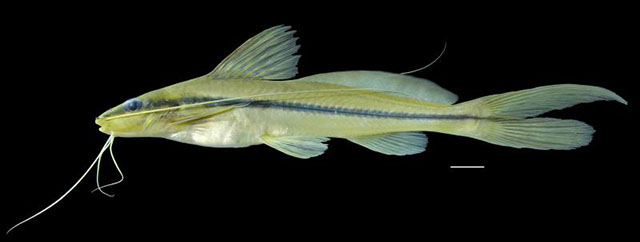| Heptapteridae (Three-barbeled catfishes) |
| 10.8 cm SL (male/unsexed) |
|
demersal; freshwater |
| South America: Maroni/Marowijne River basin. |
|
|
| Appears to be smaller than P. cristata. P. geryi and P. cristata share the same biotope. Inhabits the high and middle parts of rivers, in zones with more or less fast flowing water and a rocky substrate (rock clusters consisting of pre-Cambrian pebbles, shales). Lies hidden under rocks, letting its barbel out to auscultate the exterior world. Emits growling sounds regularly (alarm signals?) and goes stalk-hunting frequently scouting around its hiding place. The population is organized in a hierarchical structure based on size, with markedly aggressive behavior. The juveniles are found mostly in seasonal little tributaries. Diet changes according to size: small crustaceans, insect larvae and adult, and fish. This slow-growing species can live for more than 10 years in the wild (Ref. 35381). |
|
Least Concern (LC); Date assessed: 02 December 2020 Ref. (130435)
|
| harmless |
Source and more info: www.fishbase.org. For personal, classroom, and other internal use only. Not for publication.

